Chicago is one of the jewels of the Midwest, but it is a city of contrasts. While being one of the top choices of places to live in Illinois and a favorite of tourists, it also has its pockets of dangerous areas that travelers should either avoid or take extra precautions while visiting. Overall, Chicago saw a “decade-high” number of assaults and car theft in 2022, according to the Illinois Policy Institute, with an arrest rate that was the lowest it had been in 10 years.
However, throughout the first 10 months of 2023, Chicago showed signs of things turning around, as reported by WTTW Chicago in November 2023. There were double-digit percentage declines in the number of homicides and shootings from the past year, with levels of violence dropping to pre-pandemic levels. As of November 2023, police data showed that shootings were down 13%, homicides were down 12%, violent crime on bus and train routes was down 7%, and overall crime was down 9%. However, robberies increased by 25%, and car theft by 59%.
Don’t let these stats scare you from visiting Chicago and taking in its architectural wonders, its cultural institutions, and its exciting sports teams. With the cold setting in, it is one of the top winter destinations in the U.S. But do take common-sense precautions when you go and consider avoiding some of the following locations — places with higher crime rates and incidents of violence than others, according to crime statistics and research.
Washington Park
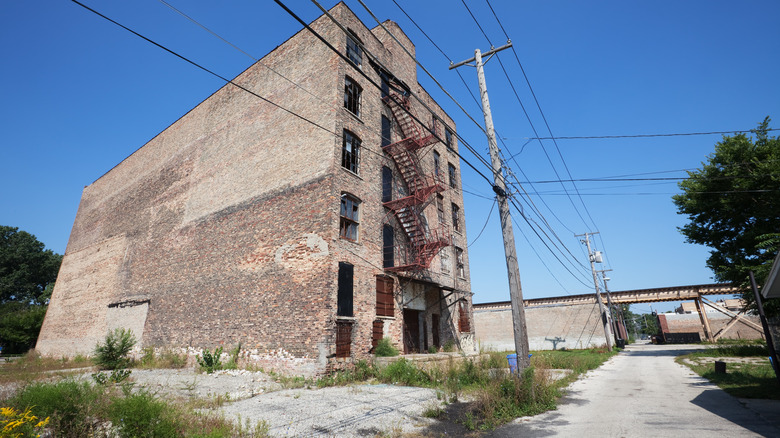
Those who watch Chicago neighborhoods and collect data for travelers and real estate purposes all agree that Washington Park is one of the most dangerous spots in Chicago. Found on Chicago’s South Side, it is west of Hyde Park and east of the Dan Ryan Expressway. According to CrimeGrade.org, the violent crime rate in this neighborhood is much higher than the national average, with homes being “300% more likely to be robbed with no home security system.”
They also note that a crime is committed in Washington Park every 5 hours and 43 minutes. What’s more, there is a one in 11 chance every day of being assaulted, robbed, or having property stolen, the Electronic System for Travel Authorization (ESTA) notes. Even the hotels and public transportation in this area are not considered entirely safe.
However, there are reasons to visit Washington Park. The DuSable Black History Museum and Education Center (considered one of the best museums in Chicago to visit) is in this neighborhood as are a bird and butterfly sanctuary, lagoons, and Lorado Taft’s statue, “The Fountain of Time.” Limit your visits to these areas to the daytime and go in groups. Don’t carry a lot of cash on you, and consider biking here rather than leaving a vehicle in the area.
West Garfield Park
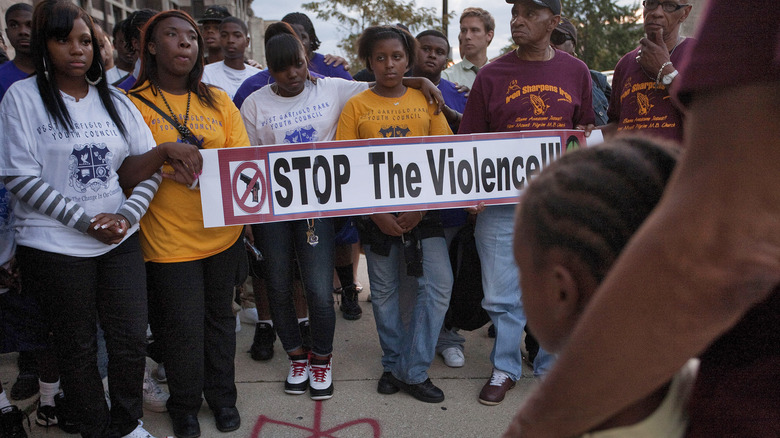
West Garfield Park is a neighborhood in Chicago that has seen a lot of gun and gang violence in the past decade. According to the Chicago Sun-Times, shootings take place an average of once every other day, with 1,500 homicides over the past decade. Crime in this neighborhood is 257% higher than in the rest of the city (via the Electronic System for Travel Authorization).
A historic neighborhood dating back to 1874 that was once home to Irish, German, Italian, Russian, and Jewish immigrants, it was hit hard by the Depression and World War II and never really recovered. Martin Luther King Jr. helped to organize the community, and when he was assassinated, riots broke out here. Today, the residents still experience high rates of poverty, unemployment, and crime, but development efforts and community organizers are committed to improving the area.
Organizations like the MAAFA Redemption Project, an anti-violence group, are seeking out active shooters and drug dealers to help them turn their lives around. You’ll want to avoid public transportation in this neighborhood, as it has been identified as a hot spot for pickpockets. However, walking or biking during the day — especially in the company of others — is considered safe.
Englewood
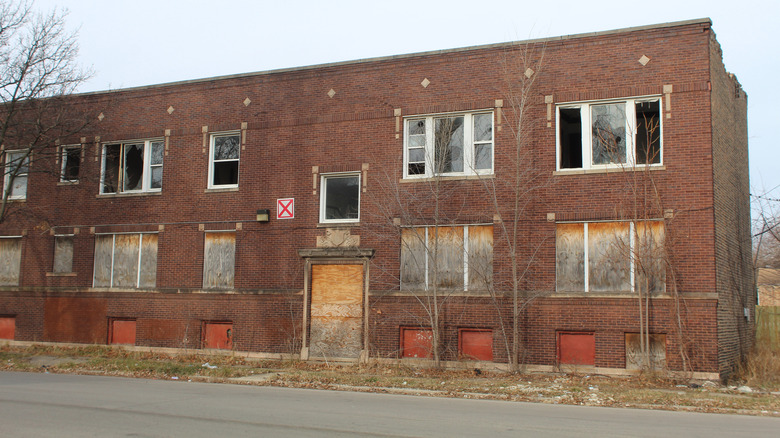
John Ruberry/Shutterstock
Englewood is a residential neighborhood with a proud musical and cultural history. Unfortunately, it has come upon hard times with many abandoned buildings dotting the streets. According to the Electric System for Travel Authorization, violent crime is eight times higher than in other U.S. cities, and it is known for public crimes such as muggings, even with a heavy police presence. Even by Chicago standards, there is a lot of crime — in 2022 alone, there were 243 shootings (via Illinois Policy).
What’s unfortunate about the high crime rates and the danger is that there are a lot of good reasons to visit Englewood. The Englewood Jazz Festival is a four-day event popular for visitors and residents alike, and the City of Chicago is working on transforming a former railroad corridor into the Englewood Nature Trail, a .75-mile multiuse path to help improve the neighborhood. And that’s just the latest effort.
The non-profit, Growing Home, has an urban farm-based training program that helps to provide fresh food to the neighborhood, which is identified as a food desert, and to assist residents with job training and career placement. If you go to the neighborhood, stay alert, keep your phone tucked away, and know where you are going.
North Lawndale
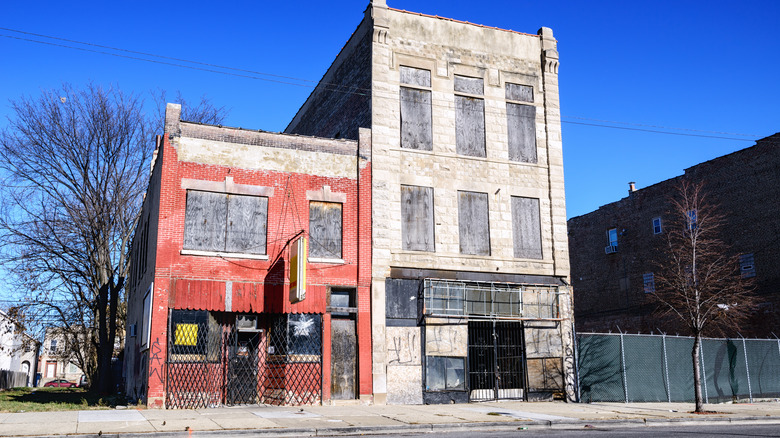
Stevegeer/Getty Images
A west-side neighborhood, North Lawndale has seen crime climb steadily since the 2008 recession. Given a letter grade of “F” for crime by AreaVibes, they cite FBI data that overall crime is 285% of the national average, and violent crime, in particular, is 327% of the national average. It’s a place where juvenile crime is rampant, and robberies, muggings, and assaults happen even during the day and on public sidewalks, according to the ESTA.
Home to the K-Town Historic District and the Foundation for Homan Square, North Lawndale features one of the greatest concentrations of greystones in the city. It is one of 10 communities being targeted by the City of Chicago for redevelopment and investment, especially along the Ogden Avenue corridor. Even a local Baptist church has committed to a $40 million project to bring affordable housing to the area. Travel in groups and avoid handling cash in public when visiting, and if you’re going to stay at a hotel in the neighborhood, make sure it has detailed security.
East Garfield Park
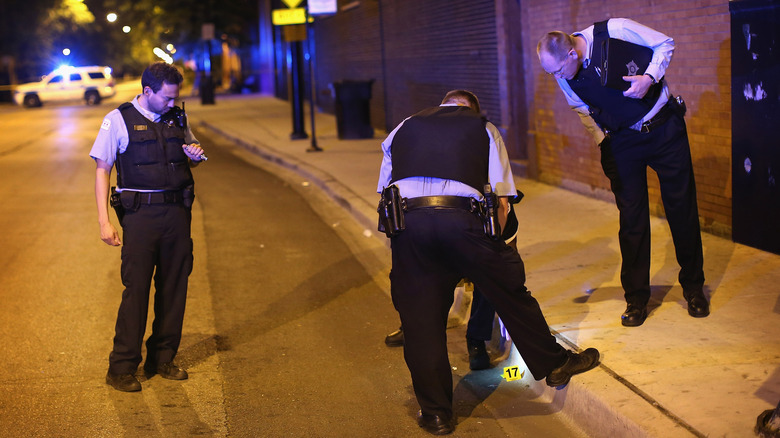
Scott Olson/Getty Images
Like its western neighbor of the same name from earlier in this list, East Garfield Park is a neighborhood that struggles with violent crime, gang, and gun violence. The Electric System for Travel Authorization cited it as having the third-highest crime rate in Illinois and 308% higher than the national average. CrimeGrade.org gives it an overall crime grade of “F,” pointing out that a crime occurs every six hours and four minutes on average in this neighborhood.
Yet, there is good reason to go to this neighborhood. It’s home to one of the nation’s largest conservatories. Listed on the National Register of Historic Places, the Garfield Park Conservatory was built in 1908 and is one of the best things to do on a rainy Chicago day, especially to see the Palm House with its 65-foot ceilings. However, reservations are required — and making reservations is a good plan when traveling anywhere in this neighborhood. Go during the day, keep your eyes off your phone and on your surroundings, and travel with others.
Austin
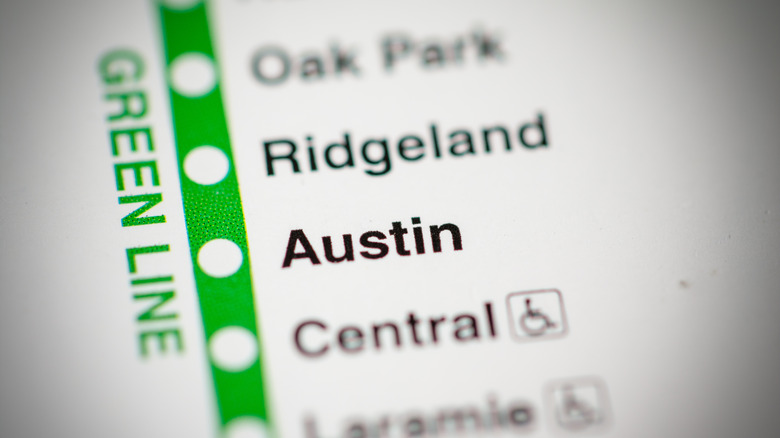
SevenMaps/Shutterstock
Found on Chicago’s West Side, Austin is the second-most populous neighborhood in the city. Austin’s history dates back to 1835, when a developer bought up much of the land in 1865, hoping to turn it into a temperance community. He’d likely be disappointed to know that his dream neighborhood now suffers from a high rate of violent and property crime, and most investment has fled. Property crimes are at 4,502 per 100,000, according to AreaVibes.com.
It’s a neighborhood filled with abandoned properties, many the result of foreclosures. Partly in response to this, a nonprofit called West Side Health Authority, based in the neighborhood, has started a program called 100 Men 100 Homes. The program’s goal is to fix up vacant homes while hiring people in the community to do the work, providing both job training and affordable housing.
Tourists still make the trek to Austin to visit the Refectory in Columbus Park and the Seth Warner House. Columbus Park is one of the only parks in the country to be designated a National Historic Landmark, and the Seth Warner house is one of the few structures in the city that pre-dates the Great Chicago Fire. One safe way to visit the neighborhood is to take one of the walking tours hosted by the Chicago Architecture Center.
Grand Crossing
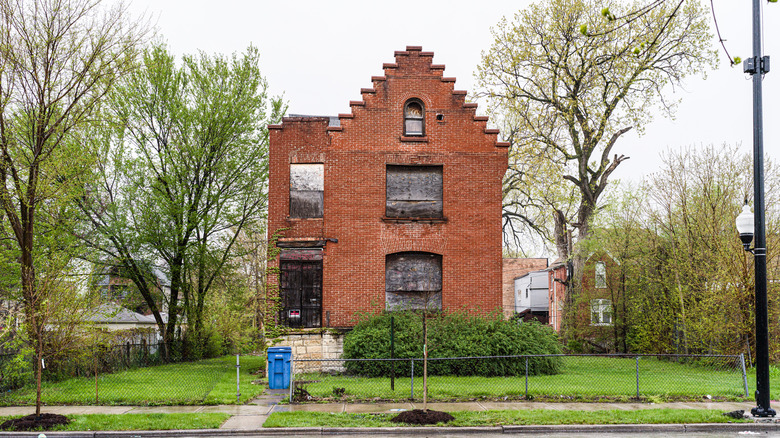
Bloomberg/Getty Images
Residents of this South Side neighborhood frequently complain about gunshots keeping them awake at night. Crime in this neighborhood is often tied to gang and drug activity. A person’s chance of being a victim of a crime is 1 in 14, according to AreaVibes.com, despite what is described as a strong police presence. According to the Chicago Police Department, overall crime is up by 76% in this neighborhood since the onset of the pandemic, with motor vehicle crime up by 258%.
Originally established in the 1800s and given a boost by the World’s Colombian Expedition of 1893, Grand Crossing has gone from being an industrial neighborhood to a primarily residential one. To help beautify the neighborhood, a nationally renowned muralist from Grand Crossing returned here in 2015. Joe “Cujo” Nelson’s work can be seen at the intersection of Cottage Grove and 71st Street. Working with local volunteers, his goal is to create greater pride in a neighborhood that has struggled over the years.
“It speaks to the history of the area in order to build a greater sense of pride from where one comes from,” he told the Chicago Community Trust. “It depicts a group of people who all resided in the area of Greater Grand Crossing, such as Gwendolyn Brooks, a phenomenal poet and Marshall Taylor, a world-class bicyclist. They are inspiring people that came from Greater Grand Crossing and there’s nothing that stopped them from attaining a high level of greatness.”
Riverdale
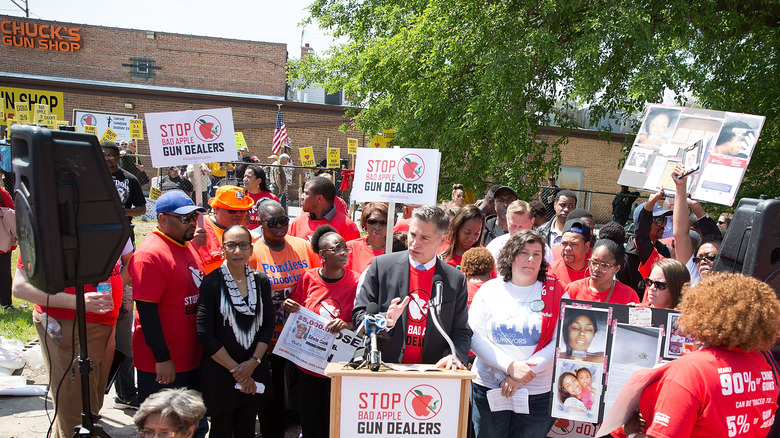
Jeff Schear/Getty Images
One of the less populated Chicago neighborhoods with only just over 7,000 people, Riverdale nonetheless has a high crime rate and gang activity. With a violent crime rate of 2,450 crimes per 100,000 people, Riverdale is home to what’s considered the most dangerous street in Chicago, according to the Electric System for Travel Authorization, which also reports that 6,912 crimes were reported in 2022, almost as many crimes as there are residents.
The south Chicago area is primarily industrial, with railroad yards claiming significant areas from the 1850s onward. Industrial waste has polluted some of the area’s land and made it unlivable. However, there are still a few parks and open areas that residents and visitors alike enjoy, including the Golden Gate Park and Beaubien Woods. Also, residents have been fighting back against gun violence. In 2022, a “die-in” was led by local faith leaders in front of a Riverdale gun shop, protesting mass shootings and readily available firearms.
Beaches with Red Flags
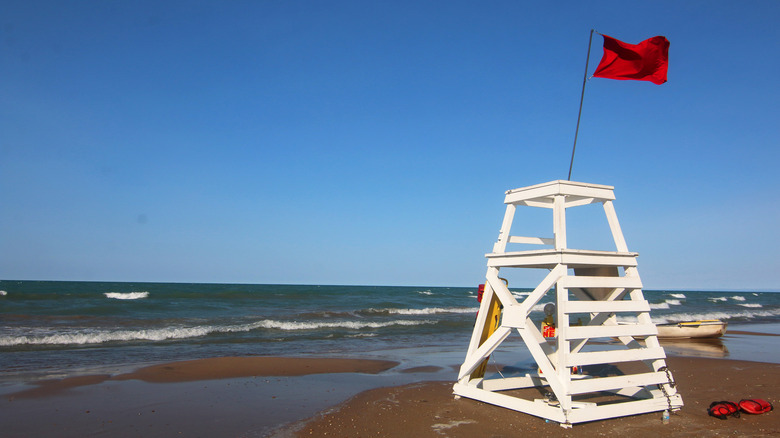
Pavel Trebukov/Shutterstock
While you don’t have to worry about sharks or jellyfish in Lake Michigan, there are times when you shouldn’t enter the water. While many don’t think of Chicago as a beach town, it has 26 miles of shoreline with more than two dozen free beaches that appeal to a variety of people. They’re all close to attractions such as restaurants, museums, and public transportation. The beaches are great places for swimming, kayaking, sailing, paddleboarding, yoga, volleyball, or building sand castles.
However, take the warnings seriously. In 2023, USA by the Numbers ranked Lake Michigan as the most dangerous lake in the U.S., having claimed thousands of lives and ships. It has extremely strong rip currents that can drown inexperienced swimmers. If there is a red flag flying on the beach, don’t go in the water. It’s a warning that the currents are particularly bad that day. Also, in the deep of winter when you think the water is frozen (and frozen waves are a beautiful and mesmerizing sight), don’t walk on the ice. Chicago has plenty of spots to safely ice skate, so stay away from Lake Michigan’s ice.
Some Elevated L Stations
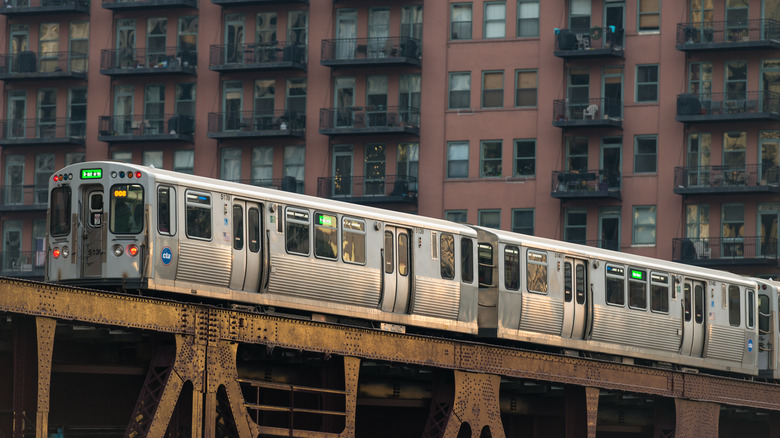
400tmax/Getty Images
Chicago’s public transportation system makes travel around the city easier for both tourists and residents. The elevated transit system, also known as the “L,” is a popular and efficient way to get around the city and to its outlying communities. It is a fairly safe way to travel, especially during the day and early evening, though it experienced an uptick in crime rates during the pandemic. During the first 11 months of 2023, there were only 4.7 violent crimes for every million rides, according to Police1.com, a drop from 6.2 the year before. Some of this might be attributed to the Chicago Transit Authority doubling its budget for security costs.
In 2020, Michael Petro, a Chicago defense lawyer, analyzed open data of Chicago crime for all of the L lines and stops. He found that the Belmont Red Line Station was the most dangerous L stop and the one with the most assaults and batteries, the most sex crimes, the most total crime reported, and the only stop with a homicide reported. The safest line was the yellow. However, in 2023, police data as reported by Police1.com, claimed that the most dangerous stations were areas around the Roosevelt Red, Orange, and Green Line Station, as well as the Grand, Jackson, and Sox-35th and 95th/Dan Ryan Red Line stations.
Methodology
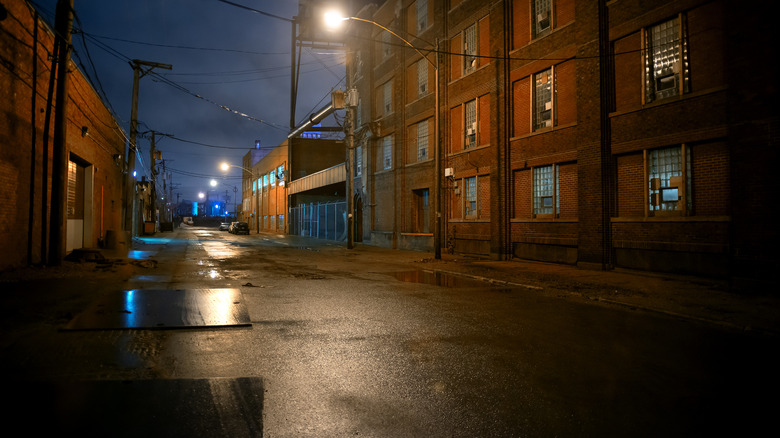
Bruno Passigatti/Shutterstock
To put together this list in a way that is helpful to those traveling to Chicago, we compared crime statistics published by the Chicago Police Department and the City of Chicago. The neighborhoods on this list had higher rates of violent crime, property crime, and even quality-of-life crimes such as vagrancy. We also took into account the crime ratings of AreaVibes.com’s livability index and CrimeGrade.org’s grading system. Finally, we reviewed the ABC7 Neighborhood Crime Tracker to get an understanding of various crime rates and what they meant. For instance, while crime in Chicago spiked during the pandemic, there are signs that it is dropping again, with violent crimes trending down in 2022 and 2023.

